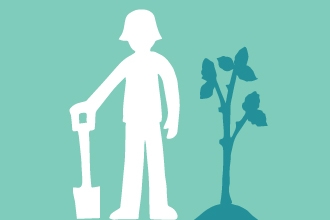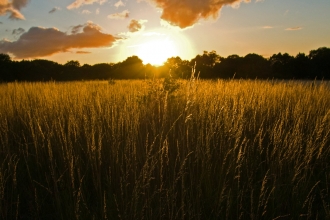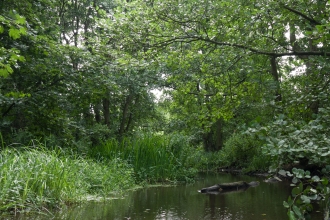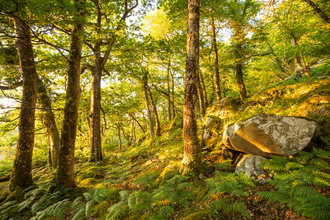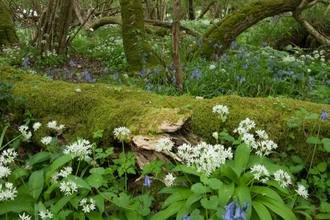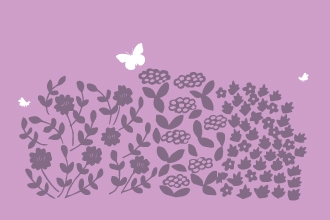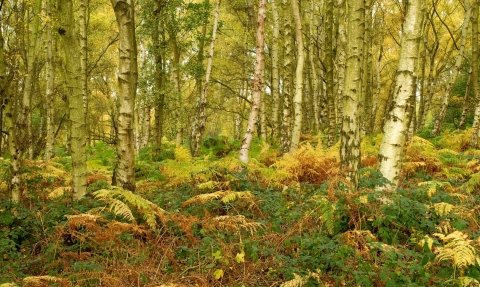
Birch woodland in Autumn, The National Forest, UK - Ben Hall/2020VISION
Trees: natural regeneration, tree planting and woodland creation
Tree planting is now widely regarded as part of a solution to the climate crisis with local and national governments now setting targets for the number of trees to be planted. Herefordshire’s landscape has around 15% tree cover and many, including Herefordshire Wildlife Trust, believe this should be far higher – closer to 30%. This would have significant benefits for storing carbon, for our native wildlife and for people as woodlands are, of course, wonderful places to visit.
However, Herefordshire Wildlife Trust is keen to ensure that all trees planted in the county are the right trees – in the right places, with a plan for their after care and thought for their whole life. The charity is advising individuals and organisations to pick native tree species that have a local provenance rather than trees grown in nurseries overseas that are shipped to the UK. Equally important is the planting site. The Trust’s Estates Manager advises: “it’s really important that trees are not planted on land that already benefits wildlife and is already storing carbon – for example, wetlands lock up 1.9 tonnes of carbon per acre. Wildflower meadows, permanent pastures and Commons are also all hugely important ecologically and its vital these are preserved within our landscapes.” The Trust advises instead to focus on increasing the numbers of hedgerow, orchard and parkland trees. When it comes to establishing a new woodland, farmland, especially field edges or fields where soil organic matter is very depleted is suggested as a good site. The Trust also promotes natural regeneration. This means allowing land to naturally revert to woodland as seeds colonise uncultivated ground. This is a slower process than planting saplings but is a cheap, low carbon option with less need for aftercare.
"It’s really important that trees are not planted on land that already benefits wildlife and is already storing carbon – for example, wetlands lock up 1.9 tonnes of carbon per acre. Wildflower meadows, permanent pastures and Commons are also all hugely important ecologically and its vital these are preserved within our landscapes."
The Trust’s Chief Executive Helen Stace says: “It’s fantastic that so many people are now interested in tree establishment and new woodland creation and this is great news for wildlife. Where planting can be most effective is where it helps to connect existing woodlands within the landscape. So, planting trees within sight of an existing woodland, planting hedgerows between woodlands and allowing existing woods to widen out or extend. This means that woodland wildlife can move over wider areas to find food and shelter and to breed and this results in stable, and growing, populations. We’re planning events to help the public make decisions on where to plant and have just launched our Trees and Climate Change policy. Anyone interested should get in touch.”
Wildlife that will particularly benefit from increased woodland that is actively managed in the county includes many small woodland birds. The British Trust for Ornithology states that: “Woodland species such as Lesser Spotted Woodpecker, Spotted Flycatcher and Willow Tit have shown… serious declines (more than 80%) since 1970.”[1] Our woodland wildflowers such as bluebell, primrose, lily-of-the-valley, violets and honeysuckle will also benefit along with the butterflies which thrive in woodland glades but are facing severe declines: pearl-bordered and silver-washed fritillaries, purple hairstreak and wood white.
[1] https://www.bto.org/our-science/publications/developing-bird-indicators
Further Reading
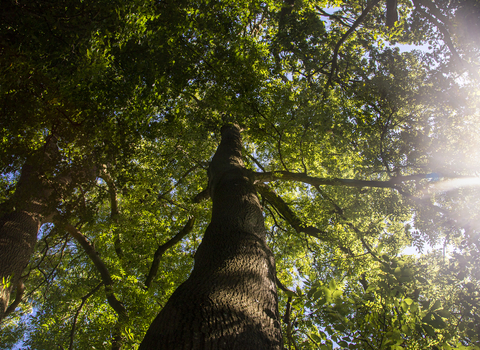
Into the Trees at Wern Wood (c) Angharad Treasure
‘The right trees, in the right place’
A guide to natural regeneration, tree planting and aftercare

